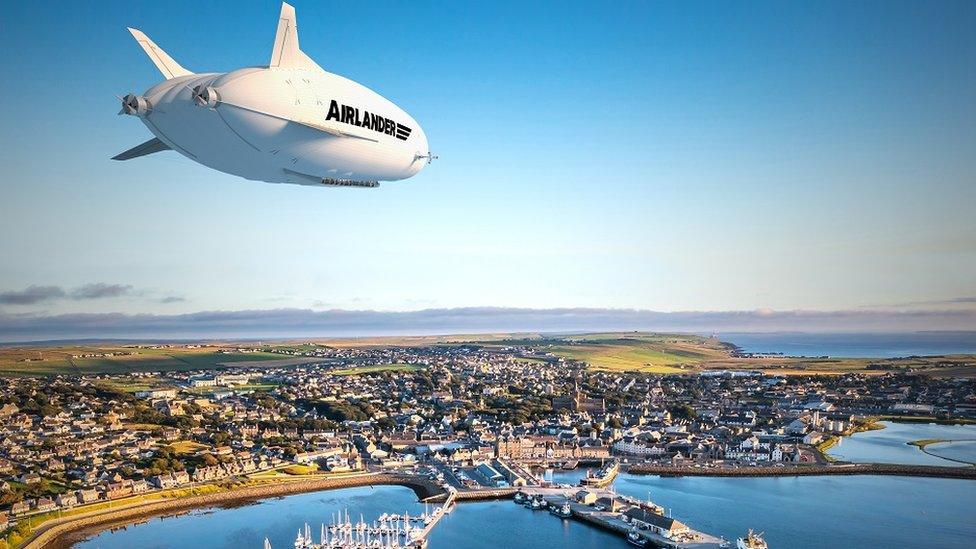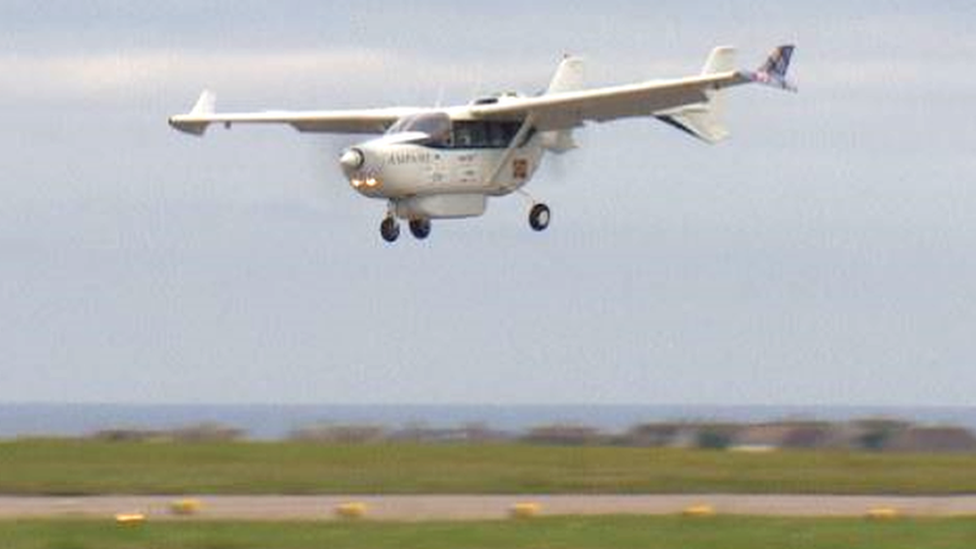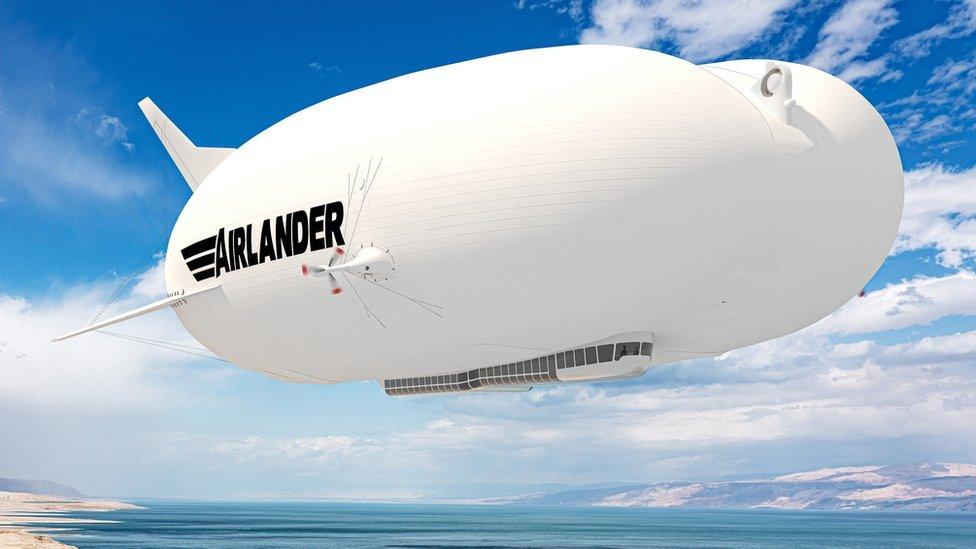Large electric aircraft could fly Scottish lifeline routes
- Published

The Airlander 10 aircraft is being developed by Bedford-based Hybrid Air Vehicles
The potential of using aircraft described as being part-plane-part-airship on Scottish lifeline routes is to be explored in a new project.
Hybrid Air Vehicles (HAV) is looking at how its Airlander 10 could carry passengers and freight around the Highlands and Islands.
HAV has previously carried out test flights in England using a prototype.
It was the world's longest aircraft at 302ft (92m) long and completed six successful test flights.
The prototype was retired in November 2017 after it broke free from its mooring mast, triggering a safety system which deflated the aircraft.
Bedford-based HAV is currently designing an all-electric variant of the Airlander. The company said it would be a zero-carbon emissions aircraft and was scheduled to be operational by the end of the decade.
The three-month study is being supported by a consortium of organisations, including Highlands and Islands Airport (Hial), Highlands and Islands Transport Partnership, Highlands and Islands Enterprise, Orkney Island Council and Glasgow-based airline Loganair.
HAV said the project would seek to understand how Airlander 10 could support "sustainable mobility" in the Highlands and Islands, and boost connectivity for communities across the region.
The aircraft, which combines airship and fixed wing aircraft technology, could carry 100 passengers or 10 tonnes of freight.

Electric planes have also been considered as part of Highlands and Islands Airports Ltd's net-zero carbon plans
Lifeline routes often serve island communities and are subsidised by the Scottish government or local authorities.
Hial managing director Inglis Lyon said the study was part of the Scottish government-owned airports company's efforts to meet its net-zero carbon targets.
He said: "This collaboration allows us to explore the potential use of Airlander 10 as part of the region's transport network. A network that provides essential and lifeline services to some of Scotland's most remote regions."
'Pave the way'
Tom Grundy, chief executive of HAV, said: "This study will, I hope, pave the way for a revolution in green short-haul flights in this wonderful, beautiful, if sometimes inaccessible, part of the world, boosting connectivity and the local economy as we do so."
Hitrans partnership director Ranald Robertson said Airlander aircraft could eventually offer an alternative to road and ferry travel.
A plan to create a low-carbon aviation zone in the Highlands and Islands using drones and hybrid electric aircraft secured almost £9m in funding earlier this year.
Trial flights have been carried out in Orkney involving a small hybrid electric plane.
There have also been demonstrations of deliveries being made by drones - which could potentially help cut long road journeys in remote and rural locations.
- Published18 July 2022
- Published12 August 2021

- Published11 January 2020
